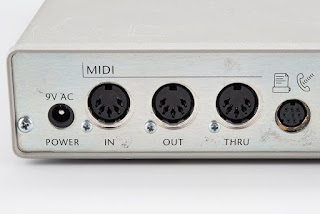https://soundcloud.com/brandon-moss-course-work/vibes-mastered
Composition Technique
Structure - The structure in my project I used is an ongoing build up of a house style genre beat which starts with a fall to the floor pattern which is repeated then followed by synths and drum samples. Eventually, these slow down after the main chorus and the base drum is removed and you are only left with a synth and high hat pattern which slowly transitions out to end the song.
Genre - The genre of my project is a house / trance stylistic.
Statement - The main hook and riff is the melody of the synth which is brought in gradually from a quarter way in. This lasts until the end of the song.
Repetition - What I have repeated in the project is the fall to the floor pattern and main melody from the synth.
Difference - The difference in the track is that the melody gradually comes in and towards the end of the track another synth is layered on top to create a transition to end the song. The fall to the floor of the bass drum is removed in the last couple of bars.
Composers rights - As a composer I will need to get rights of the tracks so that I get full claim if anyone tries to copyright it and call it there own. I would need to get grants and patents for the song I have created to protect me as a composer.
Sound Design
Waveform structures - In one of my synths I use a sylenth track which allowed me to manipulate the different waveform structures. Eg. I could change it to a square wave or saw tooth wave to create the sound that I was looking for.
Waveform editing techniques - In the sylenth track, I could add delays, distortion and compress the track to suit my style and the sound that I was trying to create.
Availability
Software inputs - I used 3 sylenth tracks and 1 Hallion tracks. The reason for using the sylenth tracks is to enable me to manipulate the sound in much greater detail. I used Hallion to get the electrical drum kit sound which I did not want to manipulate in great detail.
Analogue and digital inputs - I used a digital input from a midi keyboard controller and I used the sound cards embedded in the cuebase software and the add on content such as sylenth which allowed me to manipulate sound.
Editing sources - The editing sources I used was the sylenth layout and various compressors such as multi band compressor and other effects such as side chaining.
Sound libraries - I used the sound library which was media bay to find the sound of the high hat which I then put onto a sample pad to create my high hat beat.
Playback equipment - To keep listening to the track again I used headphones to listen in great detail to the track and I used the looping and replay button through the cuebase software.
File transfer - The midi is transferred through a USB connector which plugs directly into the computer. I downloaded the files and transferred them to the desktop.
Copyright issues - I will need to make sure that I do not use anyones music or piece of work and stick to my own original composition and if I would use small samples I would need to make sure that I had rights from the composers who created them.
Mixing / Mastering
Mastering 2CD - To master is to a CD, you highlight the selection of the track that you want to convert and complete an audio mix down. You select the cd that you are going to burn it to and choose the format that you would like the track in.
Formats and compatibility - The chosen format was to put it into an MP3 file so that it is compatible with windows and Mac Computers. This also enabled me to distribute it on line.
Loudness - When mastering the track, listening through my headphones and speakers, I would make sure that each of the tracks were at the correct sound level so that it didn't become too distorted or too loud so that it didn't damage the consumer's ear. I would need to make sure that the sound wouldn't reach over 120 decibels.
Internet distribution - I would need to make sure that the track was in the correct format, MP3, so that I could distribute my track on the internet through sites such as soundcloud where it can be consumed worldwide and online.
Compression - When mastering the track, I used a multi band compressor to compress each section of the track to make sure it was a balanced sound and to ensure that each part was not too loud or distorted. If it was I would compress the different sound waves making them smaller or bigger to get the correct sound that I am looking for.
Equalisation - In order that I may achieve the best quality sound, I will need to make sure that I have used the correct EQ and gain to make sure that the track is not over distorted or low quality.
Sonic problems - Anything could go wrong using digital technology such as the computer crashing or losing the files. So to avoid this I will need to make sure that I have a back up file just in case I lose content.









